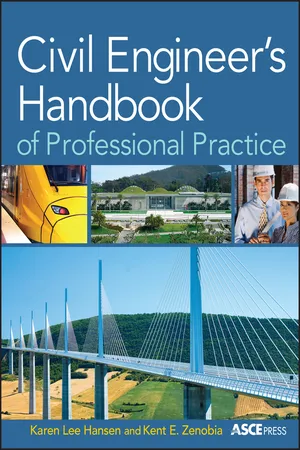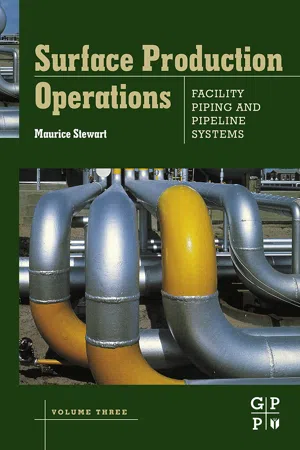Engineering Drawings
Engineering drawings are detailed visual representations of technical designs, typically created using computer-aided design (CAD) software or by hand. They communicate precise information about the size, shape, and structure of components, helping engineers, manufacturers, and construction professionals to understand and execute the design. These drawings often include dimensions, tolerances, materials, and other specifications essential for the production and assembly of the designed object.
6 Key excerpts on "Engineering Drawings"
- eBook - ePub
- Ken Morling, Stéphane Danjou(Authors)
- 2022(Publication Date)
- Routledge(Publisher)
...They can also provide a lot of information regarding a technical solution, beyond the apparently visible. Accompanied by standardised ideograms or annotations, Engineering Drawings become the ideal mode of communication to convey information between the various parties involved in the design process and even the product development process. Owing to their versatile possible use, Engineering Drawings serve at minimum one of three purposes, frequently all of them at the same time: Figure 1.5 Rendered CAD model of a pillar drill. Communication Visualisation Documentation As an example, companies use Engineering Drawings, in either paper or digital form, to convey how to fabricate a part while taking all necessary specifications into account. For that reason, precision needs to be the foremost quality of such a manufacturing drawing. However, communicating a part’s manufacturing requirements and specifications is not the sole application. There are numerous interfaces across a company where a design solution needs to be communicated and visualised without ambiguity. This includes the following departments, depending on the specific industry branch: Mechanical design Electrical design Automation and control Research and development (R&D) Project management Purchasing Production Quality control Maintenance Service Usually all these departments are somehow involved in a product’s life cycle and therefore need a clear picture of the product. Engineering Drawings represent the common communication medium and therefore can be considered to be one of the most important documents in an industrial company. Once a design is finalised, the design process needs to be diligently documented. One reason is to communicate the rationales behind a design decision, which can be understood even after years...
- eBook - ePub
- Gary Thorne(Author)
- 2015(Publication Date)
- Crowood(Publisher)
...The emphasis is on the true dimensions of structural materials to be used in the build, and on construction methods including joinery techniques. These drawings are typically produced with Computer Aided Design (CAD) programs. Structural information will include drawings for mechanical and engineered parts. Such drawings also define assembly methods with particular attention to the hardware used when applied to stage fixings. Detail drawings and the engineer A detail drawing is generally at a larger scale than the layout drawing. For construction purposes a cross section drawing will be included, defining the details as component parts. The term ‘Engineering Drawings’ applies to industrial modification of technical ideas. These specific and highly detailed drawings are accurate and precise for the manufacture of engineered components. The graphic language of Engineering Drawings is very specific. Complex scenic units that engineers design on behalf of set designers include mechanisms for movement such as: revolve, hydraulics, pneumatics, or where power control is required or where motion control functionality is needed. Venue drawings: the theatre ground plan and theatre section Theatre or venue technical drawings define the architecture of the performance venue. This consists of two drawings: ‘theatre ground plan’ and ‘theatre section’. Each defines the architectural relationship of auditorium seating to on-stage and off-stage areas. Off-stage areas may include wing space, dock area for scenic storage, get-in facilities such as dock doors, lifts, actor entrances from dressing rooms or as cross-over behind or under the stage, and access to sub-stage including orchestra pit. The amount of technical detail included on a theatre ground plan or theatre section can be significant, often making them complex maps to read...
- eBook - ePub
- K. L. Richards(Author)
- 2020(Publication Date)
- CRC Press(Publisher)
...2 Engineering Drawing Principles 2.1 Introduction The objective of this chapter is to give the student studying mechanical engineering design the foundations for producing Engineering Drawings that are to be used in the manufacture of an engineering artefact or component. Engineering Drawings are important to manufacturing engineers for all the information that is required to manufacture the part and includes information such as dimensions and tolerances, including surface finishes and material specifications. These days, as companies operate over several continents, Engineering Drawings need to be understood in a number of countries where English is not the first language. It is, therefore, important that the drawings follow the rules that are defined and embodied in the publications of the standards organisations such as the British Standards Institute (BSI) in the United Kingdom, the American National Institute (ANSI) in the United States of America and the Deutsches Institut für Normung (DIN) in Germany. The most important one is the International Standards Organisation (ISO), as this is the world’s overarching standards organisation that determines the standards which subscribing countries adopt in preference to their domestic ones. 2.1.1 Technical Product Documentation Technical Product Documentation is the term used by the ISO to describe the whole area of design communication, covering the information sufficient for the manufacture of a product and can be described in a number of ways including traditional paper-based drawings. The full title of the ISO Technical Product Documentation (TPD) standard is ISO 29845:2011 TPD. This standard has been adopted by the British Standards Institute (United Kingdom) as BS ISO 29845:2011, and at the time of writing (2017) it was under review...
- Karen Hansen, Kent Zenobia(Authors)
- 2011(Publication Date)
- Wiley(Publisher)
...The most obvious difference is that drawings largely contain information in graphical/geometric format and specifications contain information in text format. The level of detail included in the drawings and specifications corresponds to the needs of the client, of permitting and regulatory agencies, and of the contractor. The following sections discuss further the content and organization of drawings and specifications. Table 6.2 Information Contained in Construction Drawings versus Technical Specifications. Construction Drawings Technical Specifications • Design requirements represented graphically • Design requirements represented verbally • Size, shape, and relationship of elements provided • Properties and characteristics of elements provided • Location of elements depicted • Installation requirements for elements established • Products or materials shown wherever located • Products or materials described once • Products or materials shown generically • Products or materials identified specifically • Quantity indicated • Quality indicated • Few requirements for testing noted • Requirements for testing clearly spelled out Drawings Drawings depict the location, size, shape, and dimensional relationships of design elements, in addition to materials. A drawing set typically includes site and building plans, elevations, sections/profiles, details, and schedules (matrices or tables, not time-based schedules). Each drawing should include sufficient information to orient the user, including scale, a north arrow on plans, and key plans that locate partial plans within the whole...
- Maurice Stewart(Author)
- 2015(Publication Date)
- Gulf Professional Publishing(Publisher)
...5 Engineering Drawings data sheets and symbols Abstract This chapter discusses the Engineering Drawings required to properly develop and layout the process equipment and piping. These drawings include the block diagram, process flow diagram, piping and instrument diagrams, utility flow diagrams, layout/equipment arrangement drawings, piping drawings, isometrics, and electrical one-line drawings. Once the drawings are finalized, the designer routes the pipe between the various pieces of mechanical equipment as indicated by the flow diagram using project specifications, standards, and accepted design practices. Keywords Flow diagrams Block diagrams Process flow diagrams Piping and instrument diagrams Utility flow diagrams Layout/equipment arrangement drawings Piping drawings Isometrics Electrical one-line drawings Instrument data sheets Task schedules Drawing list Manpower estimates Piping symbols and abbreviations Mechanical equipment symbols Instrumentation designation and symbols Safety device symbols and identification 5.1 Engineering Drawings 5.1.1 Flow diagrams The flow diagram is used by the piping department to develop and layout the process equipment. When developing the layout, the arrangement of the mechanical equipment in the facility reflects, in part, the logical sequence of flow depicted on the flow diagram. However, many other factors such as code requirements, client standards and preferences, worker safety, and cost influence the positioning of equipment. Once the layout drawing is finalized, the piping engineer and/or designer routes the pipe between the various pieces of mechanical equipment as indicated by the flow diagram using project specifications, standards, and accepted design practices. The flow diagram is usually “yellowed out” as each line is completed and incorporated into the design. 5.1.2 Type of flow diagrams Process engineers are responsible for developing flow diagrams...
- eBook - ePub
- Roger Timings(Author)
- 2008(Publication Date)
- Routledge(Publisher)
...4 Using and communicating technical information When you have read this chapter you should understand how to: Select information sources to undertake work tasks Extract, interpret and evaluate engineering information Record and process engineering information Interpret (read) drawings in first and third angle projection Interpret welding symbols and their uses in fabrication and structural components Develop patterns for fabricated components using geometrical constructions Develop patterns for sheet-metal intersections using geometrical constructions 4.1 Selection of information sources It is necessary, for clear communications that cannot be misinterpreted, to select means of communication which ensure that the correct information is provided and used. Therefore, wherever possible, Engineering Drawings are used to transmit and receive information concerning components to be manufactured and assembled. However, some information has to be given in writing. For example: Manufacturing instructions such as the name of the parts to be made, the number required, any special finishes required and the date by which they are required. Technical data such as screw thread sizes, and manufacturers’ recommended cutting speeds and feeds. Stock lists such as material sizes, standard ‘bought-in parts’, and standard cutting tools. Training logbooks. Verbal instructions and telephone messages should be confirmed in writing or by fax. The latter is particularly useful if illustrations are involved. In industry and commerce all information must be produced in a way that is: Easy to understand with no risk of errors. Complete, with no essential details missing. Quick and easy to complete. These goals are best achieved by the use of standardized forms...





